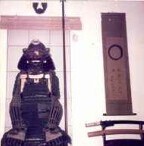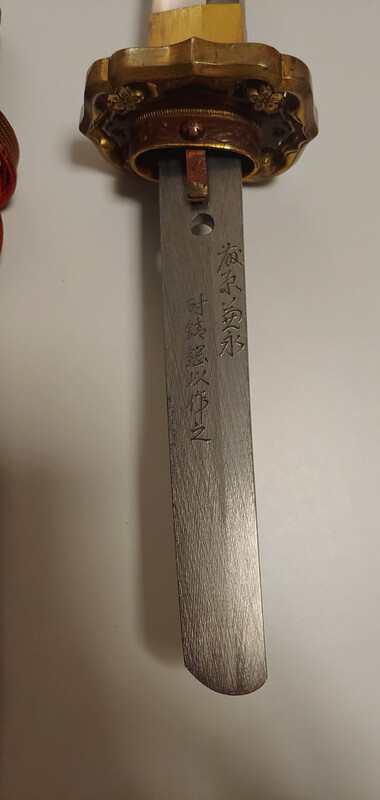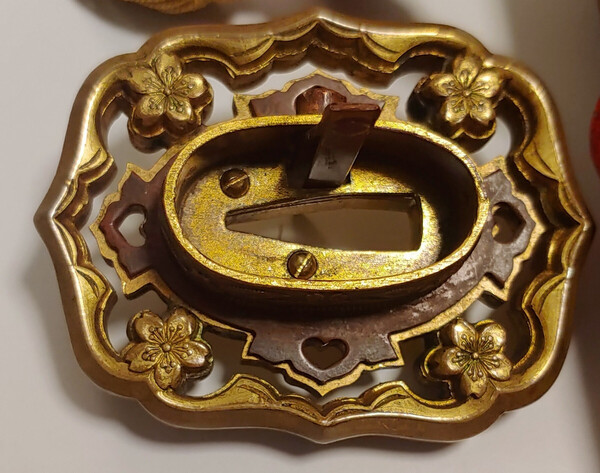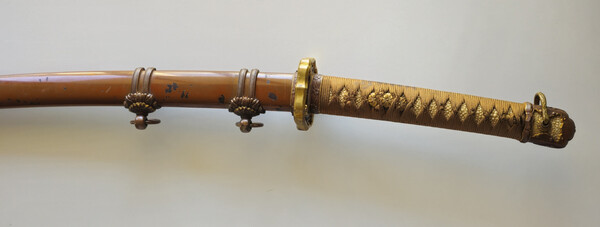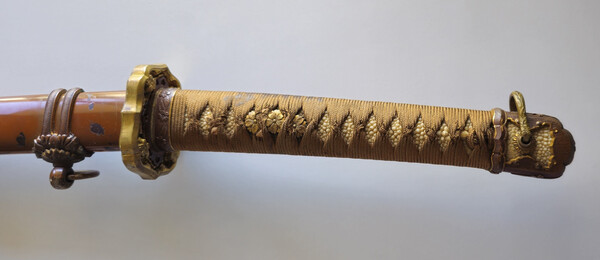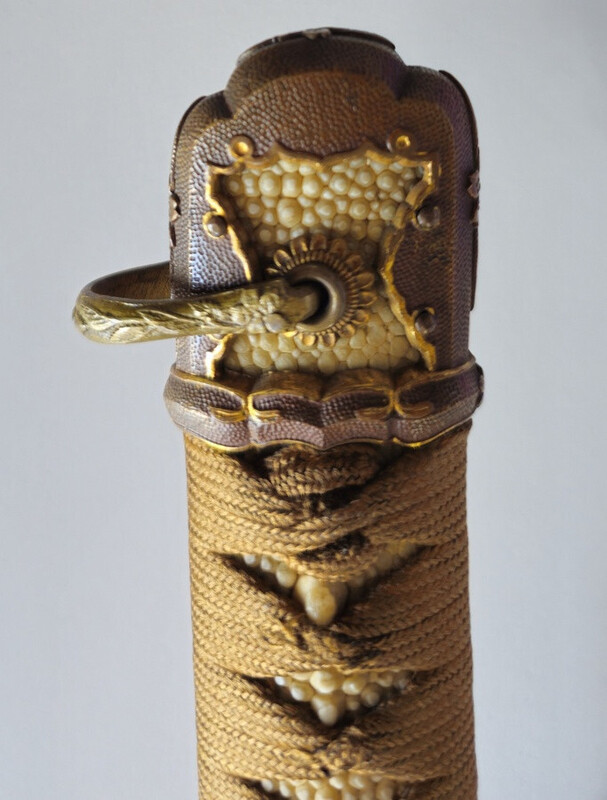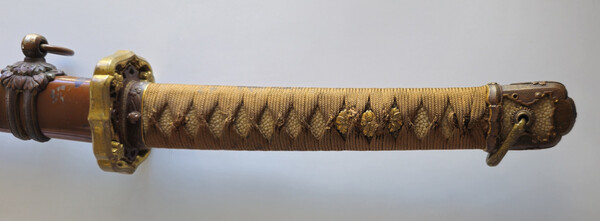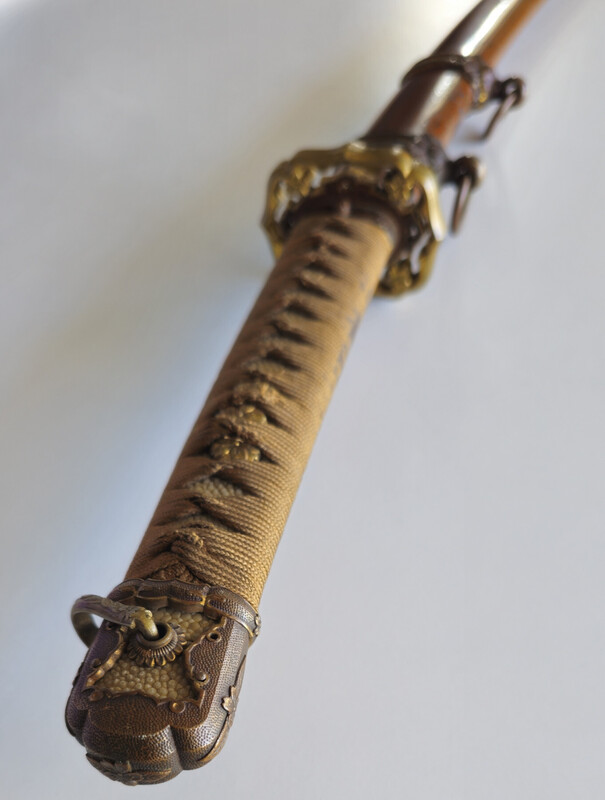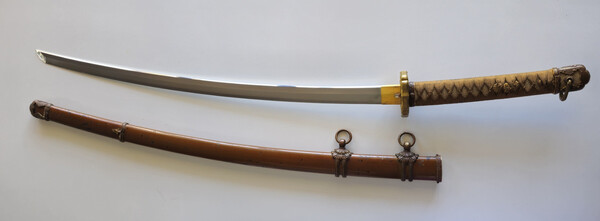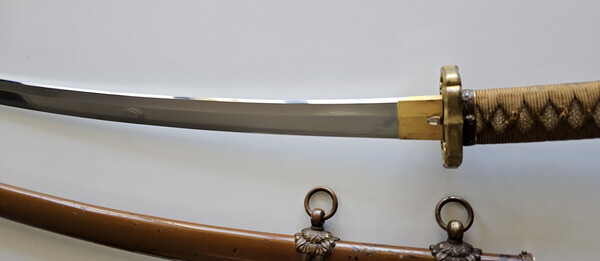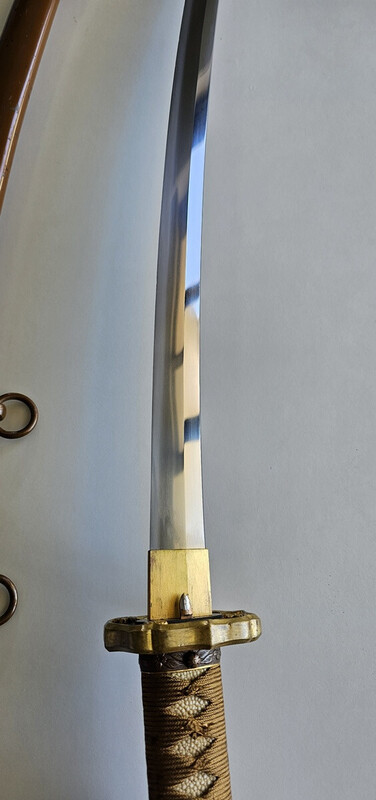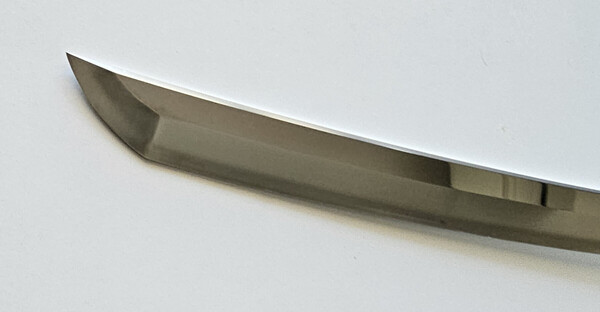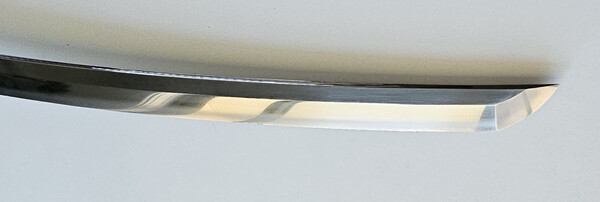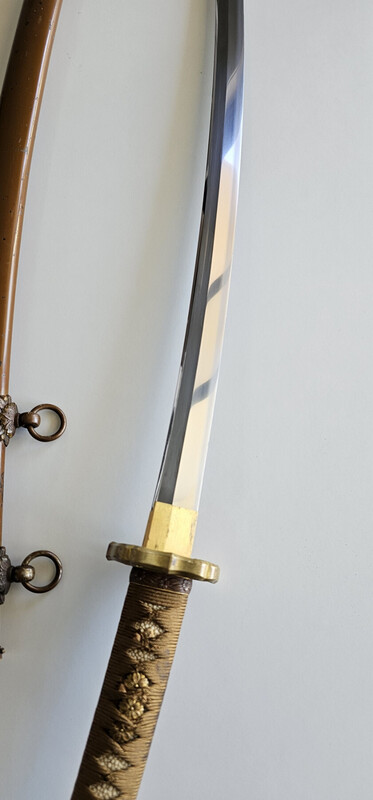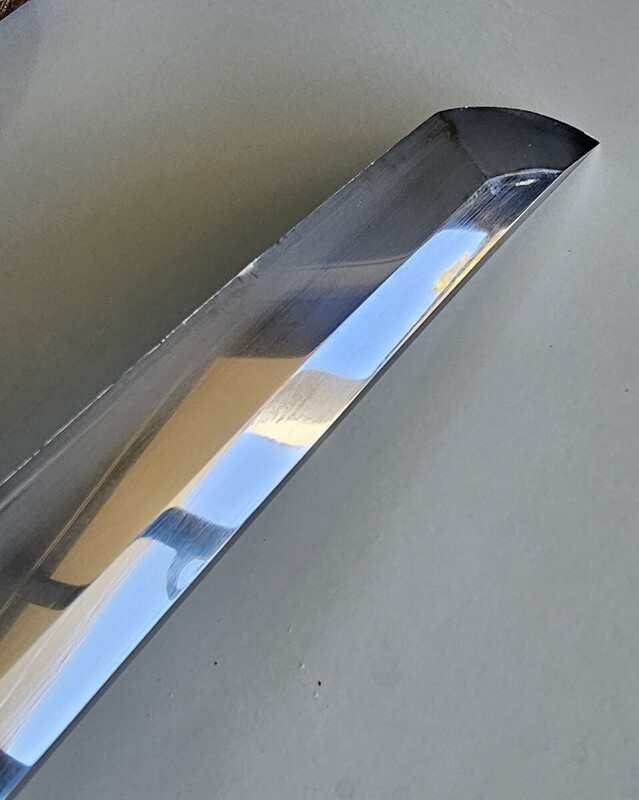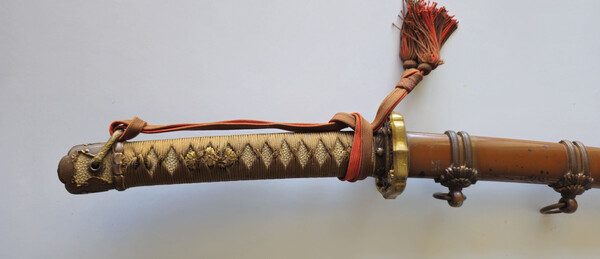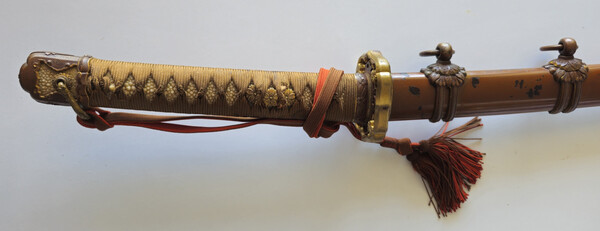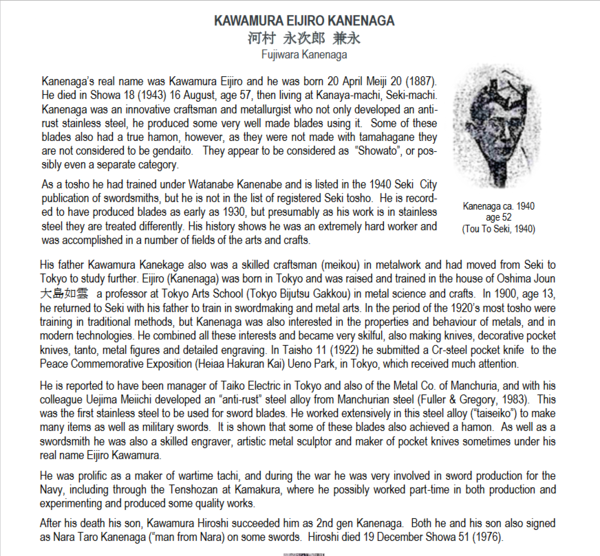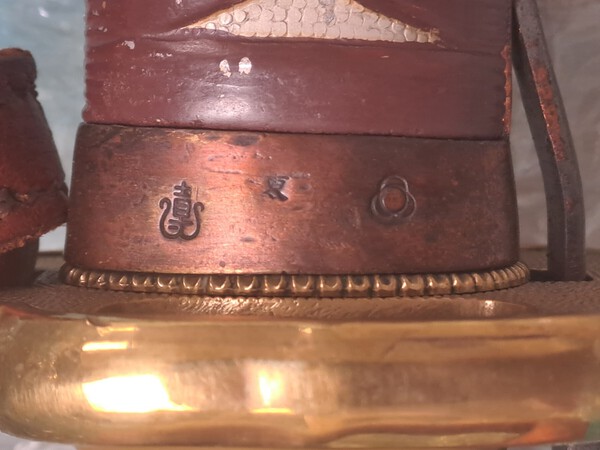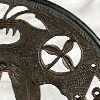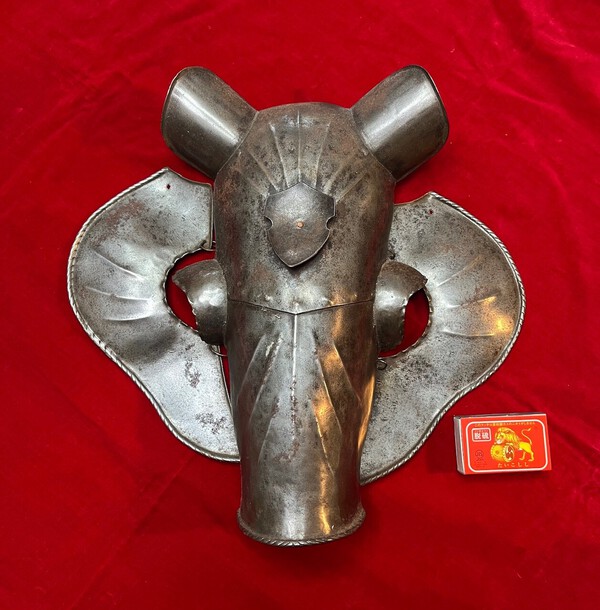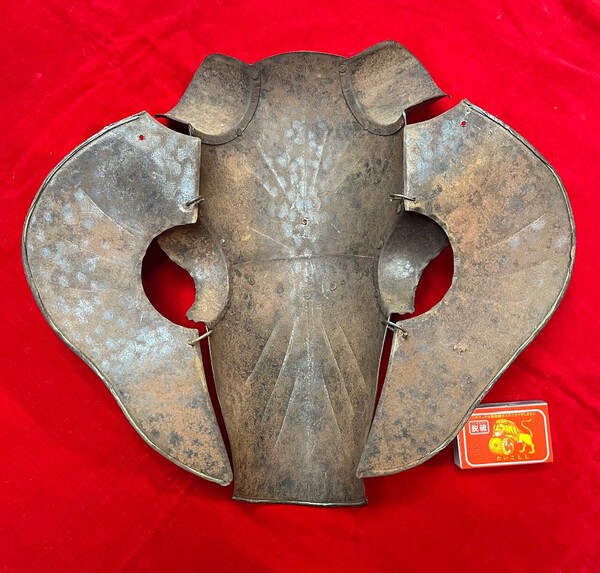All Activity
- Past hour
-
Always nice to have matching numbers of course, but if these are anything like British issued swords, non matching numbers are quite normal, especially if the sword has been back for repair at some point. One positive thing with mis matched numbers, is that they are far less likely to be modern repros, as those nearly always have matching numbers.
-
A very early example of an original Type 94, with rarely seen features like pinned Kabutogane and Tsuba retained with screws. Original 2nd hanger, gloss Saya, and thick pierced Tsuba. Stainless steel blade is in very good condition, with a only a small ding near the Kissaki. For a non-traditional blade the overall polish and forging are first class. Included is a field grade tassel. Fujiwara Kanenaga was a swordsmith, metallurgist, and artisan who pioneered the usage of stainless steel in Japanese swords during the 1920's & 30's. Below are the best articles available, full credit to Malcolm Cox and Ohmura. http://ohmura-study.net/212.html Mei reads: Fujiwara Kanenaga saku "Taisabiko" 藤原 兼永 作 耐錆鋼 Nagasa: Sori: OAL: Price: 2850usd + shipping
-
Hi Bruce, Great result with the original tsuka paint, the sales photo's didn't do it justice at all. I will pop a few more saya pictures on for you shortly. Does the mismatch between blade and saya numbers have a detrimental effect on the value, I'm just happy to finally own one to be honest lol. Adam
-
Nice, Adam! With the new pics, I'd say the tsuka paint looks original. Metal parts certainly have been buffed. Only 1 shot of the saya throat, but it does look re-painted in that shot. Exceptionally early serial number, too, for the aluminum handle group.
-
Hi all, just received my first Type 95 I ran past you all last week, gotto say it looks even nicer in person. Was a little dissapointed the saya isn't matching serial no but hey ho. Enjoy the pics!
- Today
-
Thanks Stephen! What a great job you have done on cleaning that tsuba! I have included your pictures with a small area of concentrated rust circled on the tsuba shown on the left hand side (since it seems to me that-as in my pictures-the rust has “attacked” a large surface area of the tsuba). Bottom picture is the tsuba rusted, top picture is the tsuba after your great cleaning job (that must have taken some time and patience!). What I am trying to ascertain is how an area of rust (corrosion) looks after the tsuba is cleaned. I have read posts on this forum where I think a member may mistake what I deem as a “casting flaw” for what they think was an area of rust that was cleaned. Yes, it all comes back to cast iron tsuba and yes, I could be totally wrong about if it is a flaw or cleaned rust (that is what I am trying to figure out!). Anyway, I think this is an interesting endeavor and may give some insight into identifying hand forged or cast iron tsuba. It gives this retired old guy something to do! With respect, Dan
-
There was some variation, Phil, on how to rig a gunto for shoulder/back carry. So, it wouldn't surprise me if yours had a different method. Here's a couple of threads with other examples: Leather Hanger for Type 95 Unusual Leather Covered Saya Thomas' commentary on Mizuno along with the date provided by Nick Komiya (a few months in 1942) are all we know about the company.
-
A downvote on the message board is just a mark of disagreement based upon the conclusions stated in that specific post. It should not be viewed as any type of personal attack period. All personal attacks are not permitted here. Here is an article I have read years ago about cast-iron reproductions of tsuba made in Japan (cast iron (ksky.ne.jp)). Cast-iron reproduction tsuba with exceptionally large open work designs are weak and nonfunctional as indicated in the linked article. I really cannot be sure 100% @GeorgeLuucas until I examine your tsuba in hand to confirm, but based upon the photos provide it looks to be forged iron tsuba that does show some age-appropriate (for an antique from the Edo Period) surface damage caused by rust that has since been removed and the surface patina stabilized. I once had a cast-iron reproduction of a tsuba that was a convincing fake (it fooled me, the original owner, and the dealer who sold it to me) until you examined it very closely in hand and noticed the weight of (lack of weight) the tsuba you cannot be 100% sure of anything.
-
SOLD off the NMB. Many thanks to @Winchester (Brian) for his interest and kindness
-
Help with understanding blade
DateMasamune replied to DateMasamune's topic in General Nihonto Related Discussion
Thank you for the clarification of Goma-bashi (護摩箸, Chopsticks) that means a power of Budda. I found further information on Horimono. kurikara (倶梨伽羅) – According to legend, the guardian deity Fudô-Myôô (不動明王) once had to fight a deity from another religion, the dragon king Kurikara, written with the same characters as stated above. He changed himself into a flaming sword but Kurikara did the same and the fighting went on without a winner. But then Fudô-Myôô transformed into the dragon Kurikara, wound himself around the opponent’s sword, and ate it from the top. Also referred to as kenmaki-ryû (剣巻龍, lit. “dragon winding around a sword”). There are quite many kurikara interpretations but basically we differentiate between three approaches that follow the shin-gyô-sô mentioned at the beginning, i.t. shin no kurikara (真の倶梨伽羅, “full” or “realistic kurikara”), gyô no kurikara (行の倶梨伽羅, “more or less abbreviated kurikara”), and sô no kurikara (草の倶梨伽羅, “abbreviated,” “stylized,” or “abstrac kurikara”). A shin no kurikara is often seen on blades of Nobukuni, Heianjô Nagayoshi, of the Sue-Bizen school, at Awataguchi Ikkanshi Tadatsuna, Hizen Tadayoshi, Echizen Yasutsugu, Higo no Daijô Sadakuni, Suishinshi Masamune, Hosokawa Masayoshi, Taikei Naotane, and at the shinshintô and gendai Gassan school. A gyô no kurikara can be found on Nobukuni and Heianjô Nagayoshi blades, at Kagemitsu, the Sue-Bizen and Sue-Sôshû schools, Echizen Yasutsugu, Kotetsu, Hizen Tadayoshi, Taikei Naotane, and Tairyûsai Sôkan (泰龍斎宗寛). And a stylized sô no kurikara is typical for the Hasebe school, Nobukuni, Heianjô Nagayoshi, the Kanabô school, the Sue-Sôshû and Sue-Bizen school, the smiths around Osafune Kanemitsu, Awataguchi Ikkanshi Tadatsuna, Echizen Yatsuugu, Hizen Tadayoshi, the shintô Hôjôji school, Ômi no Kami Tsuguhira (近江守継平), Harima no Daijô Shigetaka (播磨大掾重高), Yamashiro no Kami Kunikiyo (山城守国清), and Taikei Naotane. And please note that Heianjô Nagayoshi often combined a gyô no kurikara and a sô no kurikara or two differently stylized sô no kurikara distributed on the two sides of one blade. The same peculiarity is seen at the Kanabô school. But it has to be pointed out that sometimes it is hard to say if a kurikara is shin or already gyô or gyô tending to sô. https://markussesko....8/kantei-1-sugata-4/ If it turns out the Bonji is Fudô-Myôô the sword is now completely explained, and I will write everything down. -
The tsuba has been made from cutting it out of a large katana tsuba (damaged ?). On one outer side I can see the cutting marks and it is uneven. The only sword it fits is a very large katana but it looks stupid. The nakago-ana is too big for any tanto or normal wakizashi or slender katana. The Japanese seller made an honest mistake in describing it as a tanto tsuba purely based on its diameter and I didn't notice the plastic ruler across the whole tsuba which did indicate it had a large nakago-ana. The seller offered me a refund or discount but as this was a cheap tsuba I didn't worry as I intend to buy more later on. So we both had a tsuba lesson
-
I remember a trooper falling from his horse a few years back, and the papers commented that he was saved from injury by his breast and backplate! The MOD have sold many of the original cuirass' now, and many of those in use are made of plastic. A modern technological improvement.........
-
Thanks so much for the information Russ. I had given up on ever finding out what it was, and while reading this thread I suddenly remembered it and thought that you might be the very man to help! Quite topical with the Guards' horses bolting through London yesterday!
-
Awesome, thank you very much for that Piers, that is much appreciated. A chanfron (horses head) A modern made one though ! Miniature armour of all types is quite popular, as well as great fun to make. This is also how many people learn the various techniques needed to make armour. as it is much easier and cheaper in miniature. On full size chanfrons, or ones intended for use, the side panels are usually held by hinges, this makes it more secure, but also cuts down on noise, which helps to save the horse from getting scared. It takes quite a time to get a horse used to the noise of a man in armour, and even longer if the horse is wearing it too! Thank you again! On the subject of childrens armour, here is a childs armour that I have been making. Greenwich style, ca. 1590-1600. Here is a another view of it, in a much earlier state of completion, with a visiting school class. Note the teacher who is struggling to hold it! It weighs 9kgs (19.8lbs) and this is only a half armour down to the waist, as at this age , about 6yo, they were too young to have a horse, and thus didn't need legs for the armour. This is about the correct weight for an armour of this type and period. Just thought this might be of some interest.
-
This is worrying. I will have to ask a few of my dealer contacts what they will do. Much of my collection has come from abroad, mainly UK and US. Luckily, I have never had a problem, either with anything going missing, or damaged. Only problem I have ever had was a bayonet that came from Ireland, and which took seven weeks to get here, and nobody knows swhy, or where it had been. There are a couple of items that I am hoping to acquite from the Uk, so I will ask them about sending them to me, and report back. I did buy a rare bayonet some ten years back, and the dealer wouldn't send it out of the counrty, as he informed me that the Royal Mail would destroy it! I had it sent to a friend of mine, and he tried to send it to me, only to be informed the same thing. I eventually had it sent to a dealer friend of mine, who very kindly sent it to me, via Royal Mail as per usual, no problem at all! I have bought many bayonets from him, and never had a problem. It seems that Royal Mail didn't know their own rules, as bayonets were not prohibited in any form!
-
-
Wonderful, I'd love to see it!
-
Hang on then, I'll try and source a pic, Russ. (Probaby the latter, though...)
-
I don't suppose you have a picture of that on file do you Piers? Certainly in Europe, after the age of about eight, children of noble rank would have had a small horse, and that probably had armour too. It is thought that children as young as three would have had armour so that they could get used to the weight and the heat of it. At eight they would begin armoured horsemanship, and by about fourteen or fifteen, they were adults and took their place in the line of battle. Edward of Woodstock, the famous Black Prince 1330-1376, was only sixteen when he commanded a wing of the English army in the thick of it at the Battle of Crecy. So it was necessary for young nobles to get acquaited with arms and armour at an early age. So perhaps a small horses head (Chanfron) is possible. Dogs too had some armour, both for war and for hunting, though this is extremely rare. The other possibility is that during the 19th century there was a huge revival of all things medieval, and many extremely good items were made, and antiqued, to satisfy the market greedy for such historic artifacts. Many large collections were formed at this time and Pratt, Pigeon, Bacheraux and Schmidt were famous producers and suppliers of these items, many of which have fooled collectors and museums. Many of the items are beautifully made.

